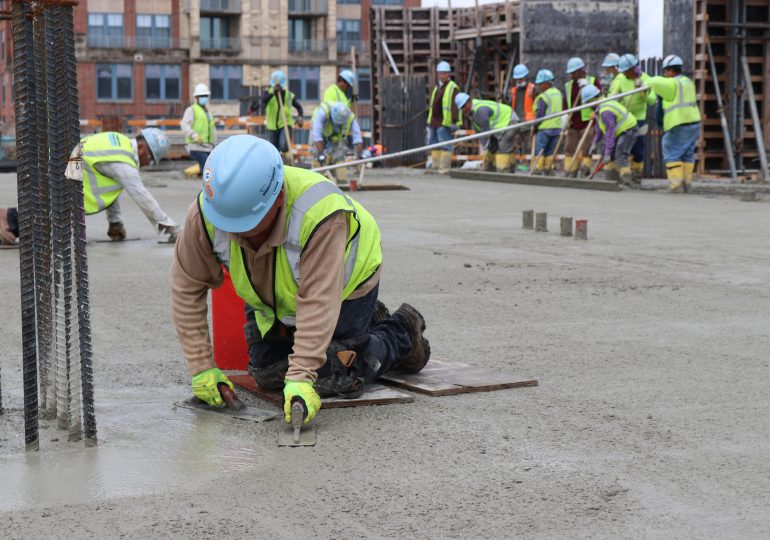More than perhaps any other material, cement is the glue that holds the globalized world together—especially our cities. But producing it requires huge amounts of fossil fuels, and the industry is responsible for up to 8% of global greenhouse-gas emissions, according to a 2023 study in Nature.
Efforts to tackle the issue have historically centered on things like fuel and efficiency. But some companies have another option, which could be a win-win for the climate and the cement industry: creating carbon-negative building materials by storing excess carbon dioxide in concrete.
[time-brightcove not-tgx=”true”]
Paebbl captures carbon from the atmosphere and combines it with ground olivine rock to create a rock powder or slurry. That can be used as an inert industrial filler or ingredient in building materials like concrete. The process, known as accelerated mineralization, can be done within an hour and potentially bring the carbon footprint of concrete down by up to 70%, says Paebbl’s co-CEO Andreas Saari. In nature, that process can take centuries.
“Not only are you storing carbon, but you are also substituting some of the [kiln-made] clinker which is the big carbon emitter in concrete,” he says. “It doesn’t require a high temperature to make; it gives off heat, which we can recapture and use as energy.”
Paebbl produces 200 kg to 300 kg of product each day at its pilot plant in Rotterdam, where it is also building a demonstration plant. By 2030, it aims to have three commercial-scale plants operational across Europe and North America.
Other companies are storing carbon directly in concrete. CarbonCure injects carbon dioxide into fresh concrete during mixing. Once injected, the gas undergoes mineralization, permanently binding to the concrete. By using this form of concrete, companies can reduce their emissions by 3% to 5%. CarbonCure estimates it has saved around 450,000 metric tons of CO2 to date.
Read More: How Cities Are Clamping Down on Traffic to Help Fight Emissions
One major roadblock in scaling up technologies like these is getting past prescriptive specifications in codes and regulations. Building codes are being updated to allow for newer forms of lower-emissions concrete. And in the U.S., the Federal Buy Clean Initiative has led to the specification of more than $2 billion for the procurement of lower-carbon construction materials, including cement, for federally funded projects. And companies like Paebbl and CarbonCure also see an economic incentive for their technology by selling credits for the carbon stored in construction materials.
For now, it is “a bridge solution,” Saari says. “We need to find a way to store billions of tons of CO2. Where can we find a permanent home for that? Construction material is there.”
Leave a comment








